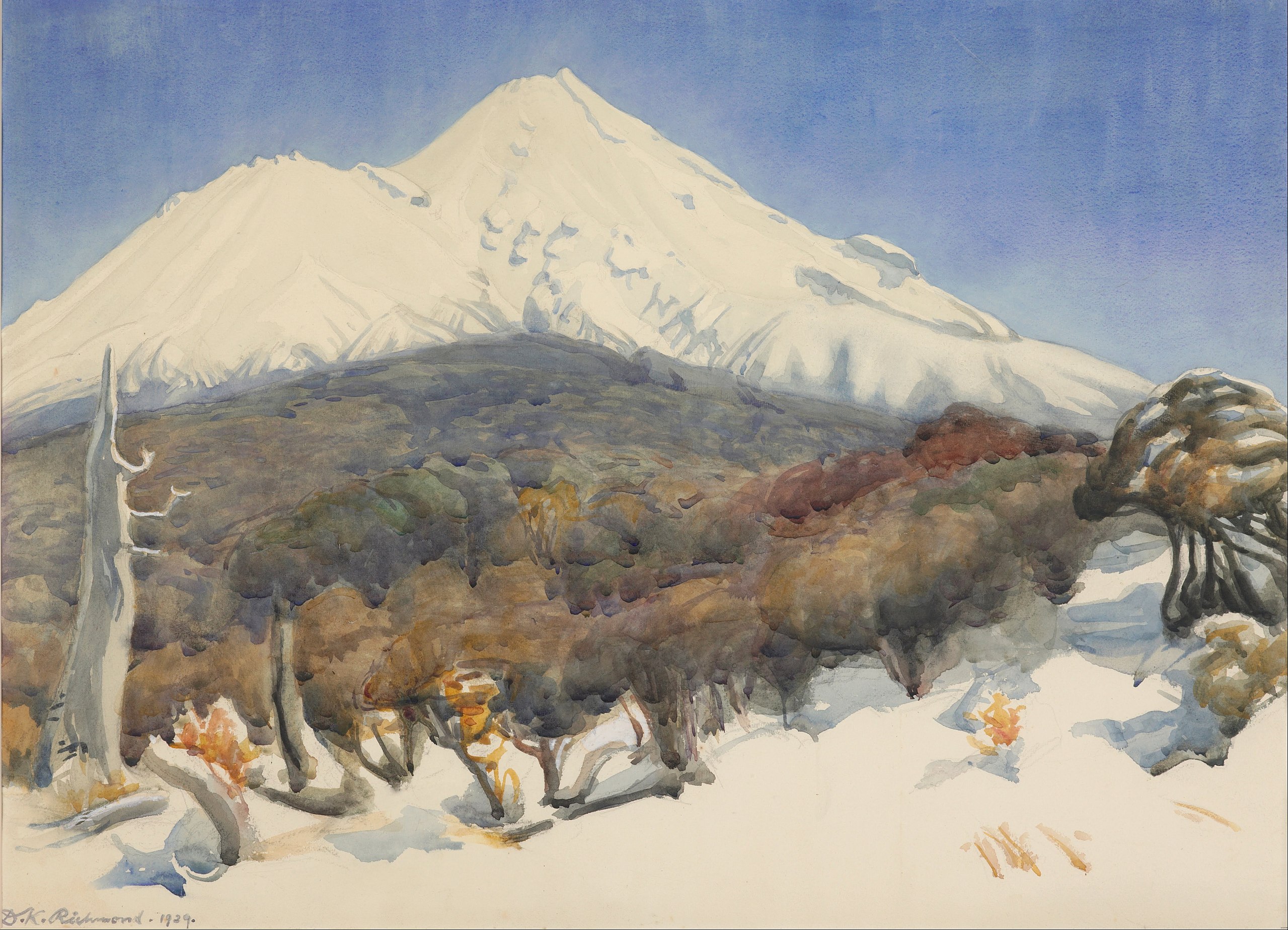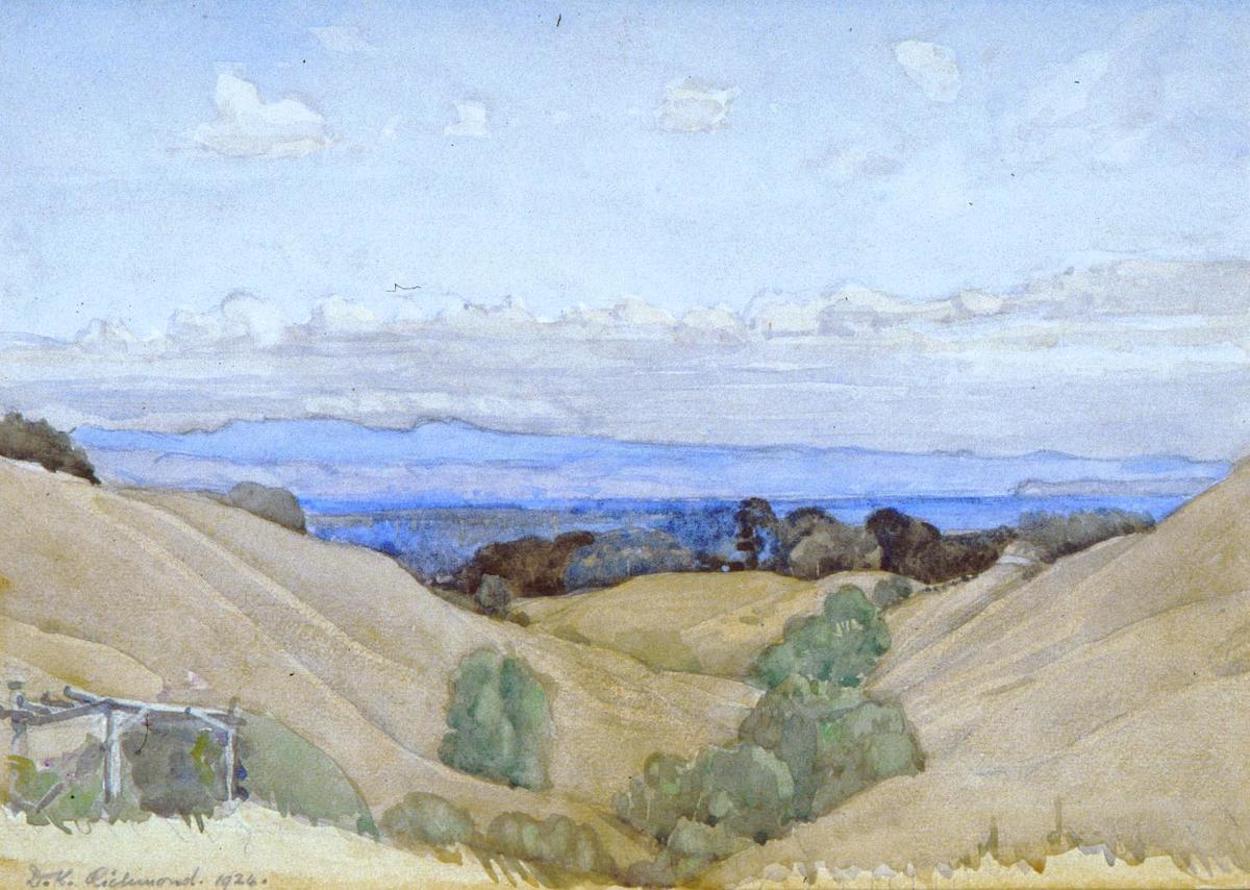This is the best-known and finest watercolor made by Dorothy Richmond. Mount Egmont features one of the most frequently painted subjects in New Zealand landscape art. It is constructed through the simplest of means: the artist leaves much of the foreground untouched, creating a sense of space and using the white of the paper as one of the elements of her design. At left, a bleached tree form points beyond the bush to the snow-covered mountain outlined against a clear blue sky. In this serene view, completed in the last years of her life, Richmond seems to express both an attachment to New Zealand landscape, and her delight and wonder in the natural world.
Richmond was the daughter of James Crowe Richmond, a prominent colonist and noted watercolorist who encouraged his daughter to take up painting. From 1878 to 1880 she attended the Slade School of Art in London; in 1889 she travelled in Europe with her father. After his death in 1898 she again returned to England, where she worked at, among other places, Newlyn, an artists’ colony in Cornwall and base for painters committed to outdoor working and natural light effects.
In 1903 Richmond returned to New Zealand accompanied by Frances Hodgkins. Unlike Hodgkins, she remained in Wellington, becoming a central figure in the city’s artistic life. She was especially renowned for the transparency and delicacy of her watercolors; she acquired a reputation for flower painting and landscapes of the Wellington bays and countryside.
Beautiful, isn't it?
P.S. Please check our latest venture: DailyArt Prints, with art history masterpieces printed in superb quality.
P.P.S Brrr... It's getting cold outside. :( Grab a tea and click here to check out the most famous winter landscape in art history!


 Dorothy Richmond
Dorothy Richmond